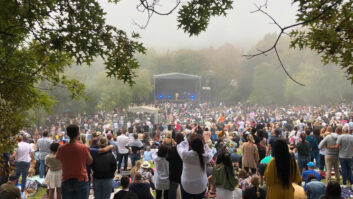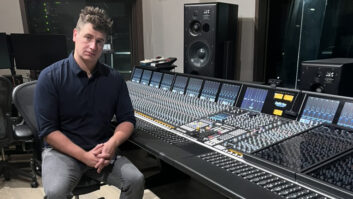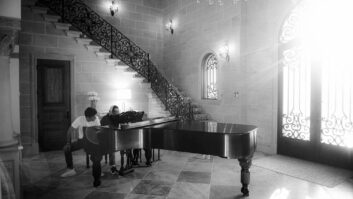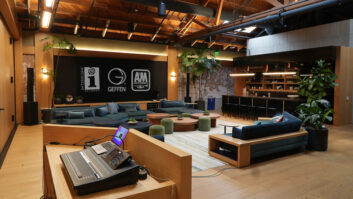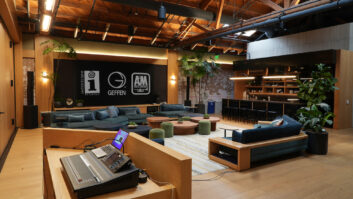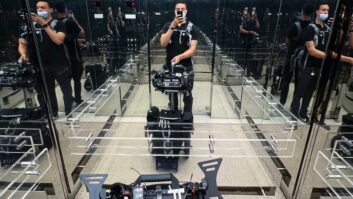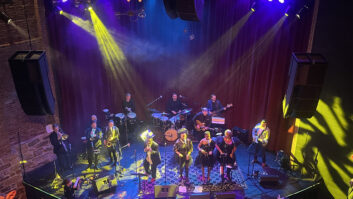Nearly three years after the release of the Coen Brothers’ quirky film O Brother, Where Art Thou?, and the accompanying soundtrack of Depression-era country music and blues, the phenomenon shows no sign of letting up. The album has sold millions, been awarded Grammys (including Best Album at this year’s fete), and a tour featuring a number of the musicians from the soundtrack — dubbed the Down From the Mountain tour — is now on its second leg, drawing large, appreciative crowds wherever it goes.
Down From the Mountain began as a one-shot benefit concert for the Country Music Hall of Fame at Nashville’s Ryman Auditorium in May 2000, after the soundtrack album had been released, but before O Brother, Where Art Thou? premiered. That concert, featuring such notables as Ralph Stanley, Emmylou Harris, the Fairfield Four, Alison Krauss, Gillian Welch and David Rawlings, John Hartford (who subsequently died) and many others, became a theatrical film (and later a video/DVD release) directed by D.A. Pennebaker (of Don’t Look Back and Monterey Pop fame), and generated such a buzz that the show later went on the road — the first leg last winter was about four weeks (19 shows); the troupe is now on a 42-show tour stretching from the end of June to the end of August and encompassing a broad range of venues, from theaters to arenas to sheds. A CD of the concert won a Grammy in the Traditional Folk Album category.
When O Brother soundtrack producer T Bone Burnett and others conceived of the Ryman show and Down From the Mountain film, every effort was made to have the stage look like an old-time music concert in the ’30s. Because it was composed of entirely acoustic music, there were no amplifiers onstage, and there was also nary a modern condenser mic in sight; rather, the stage was dominated by vintage Neumann U47s, mics not usually used in concert applications, but which had the appropriate look for the concert and film. “We tried a whole bunch of different microphones the day of rehearsal,” says FOH engineer Bernie Velluti, “and I was having no luck at all. Some of these were omni patterns and figure-8s. Some of the others turned out to be props more than working microphones. So we did the U47s, and it came off fine. But the Ryman is a small auditorium, and when it came time to do the tour, I wasn’t so sure. I made up two plots — one with a more conventional way of close-miking things and the other with large-diaphragm mics.” Velluti and monitor engineer Frank Edmonson both work regularly with Alison Krauss & Union Station, which was also like a de facto house band on the tour. (Union Station’s Dan Tyminski is the voice behind the Soggy Bottom Boys, the onscreen band led by George Clooney in O Brother.)
In the end, Velluti decided to stick with the large vintage mics, usually putting a 47 in the middle, surrounded by a few U87s. “We also had a section off to the side for the little blues part of the show, and for that we had RCA 77 ribbon mics. We used an RCA 44, another ribbon, on the bass.” Velluti also brought Shure KSM 32 and 44 mics, which he used to complement and occasionally substitute for the Neumann models. “They’re good microphones, and they also have that look we’re going for,” he says. Though on the surface it seems like it would be easy to manage such a small number of microphones and performers, “the musicians change around a lot onstage, and you have to stay on top of it,” Velluti says. “One person will be two feet away from a mic singing, the next person might be playing guitar, another might be five feet over playing a mandolin; there are a lot of variables in the delivery. A lot of times, I feel like I’m mixing zones as much as individual instruments.”
For the first leg of the tour, Velluti and company traveled light — renting P.A.s as they went or using whatever was already in the venues. His favorite P.A. was a flown JBL VerTec array supplied by SE Systems, a Greensboro, N.C., company that does lots of bluegrass festivals and other acoustic music work. “I wanted something that would give me as much isolation from the stage as possible, and these array systems are the way to go — either the [L’Acoustics] V-DOSC or the VerTec are such a step up from the traditional trapezoid systems,” Velluti says. For the current leg of the tour, Velluti is carrying a VerTec array.
“We had different consoles every day on the first tour,” Velluti adds. “It was the system du jour.” They did, however, carry the Crest monitor console Edmonson uses with Union Station. Monitors were a combination of wedges and Shure in-ears — different musicians used different combinations, even as the tour progressed. On this summer’s tour, Velluti is bringing a Yamaha PM3500 for FOH, with a Soundcraft SM-20 handling monitors.
The current leg of the tour promises to be even more challenging sonically than the first one, mainly because so many of the venues are larger. Velluti is aware that small-group acoustic music doesn’t always translate well in larger spaces. “How big does a venue get before you lose that intimacy and that feel that is so important to this kind of music?” he asks. “This is not an in-your-face kind of show. It’s very intimate and subtle music; the dynamics onstage are very important, and you want to be able to get that across to everyone the audience. T Bone calls it parlor music. There’s such great talent and musicianship up there that you want to represent that as well as you can. There are moments in the show where you just get goose flesh, it’s so eerily good.”

